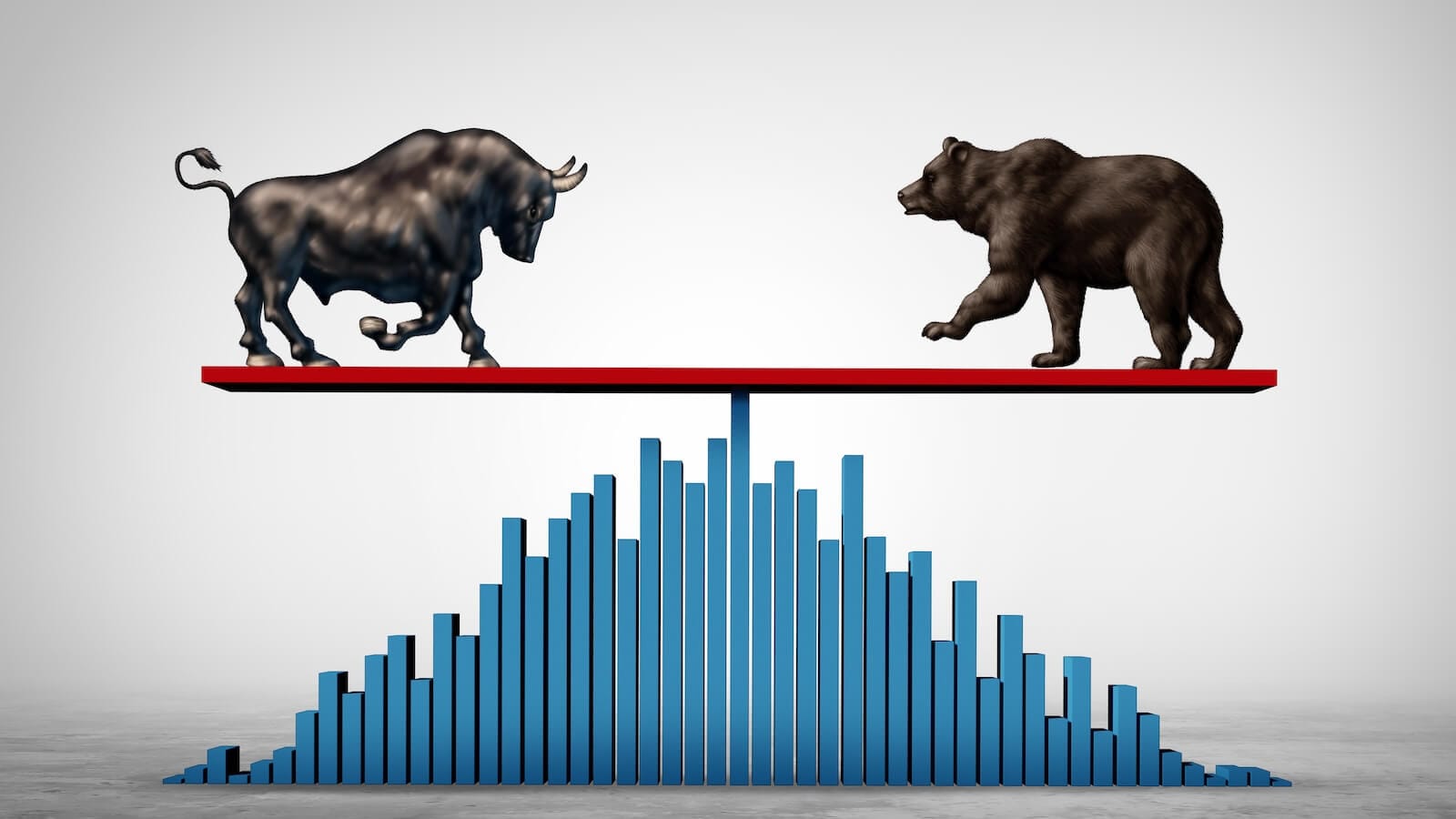Up Now, Down Later?
The Hysteria
Last week I saw more references to the stock market and its sharp drop on cable TV than I can ever recall.
Normally, as Humphrey Neil, the father of contrarian thinking put it, "When everyone thinks the same, everyone is usually wrong." That's because the crowd has already factored its hopes and fears into the price and, consequently, there is no one left to sell. Well, judging from the hysteria last week, it seems likely that bearish opinions are almost universal. That, of course, is my interpretation, not a quantifiable conclusion.
However, Figure 1 is quantifiable. It features the CNN Fear and Greed Index, brought to my attention by Pring Turner partners Tom and Jim Kopas in this 5-minute clip focusing on the outlook. As you can see, it is currently in the extreme fear zone, reflecting the fact that emotions are exceptionally high.

That's also the impression we get from Chart 1, which shows the percentage of bearish AAII members at an extreme. It's well above the horizontal green "fear" line, from which downside reversals have invariably been followed by a nice rally. The only exceptions since 2013 developed in the 2022 bear market. The indicator has not yet peaked, but is at the kind of extreme that makes it difficult for it rally much further. If it generates a rally and that advance is sub-par, it would represent one indication of a bear market characteristic a la 2022 -- something to watch out for.

Chart 2 compares the $SPX to its 9-day RSI. The green arrows flag previous oversold conditions, all of which were generated under the context of a primary bull market. Those that developed in February and early March were not followed by an advance of any kind. This lack of response is one indication that a bear market may be underway. Further evidence could be provided by next week's action to see if Thursday's oversold condition can break the pattern of nonresponse with a nice rally. Note that the 200-day MA currently remains intact, thereby providing important support.

Chart 3 offers hope that it will soon climb back more decisively above the extended red breakdown line. That's because Friday's action represented a bullish hammer, which was able to eke out a close just slightly above the line. What is impressive is the fact that the $SPX worked its way lower in the last week, but the number of new lows, for stocks included in the index, maxed out very early in March. This positive discrepancy has been flagged by the two dashed-green arrows. Interestingly, Friday saw an equal number of new lows as new highs, thereby indicating that, under the hood, things were not as bad as they appeared on the surface.

The short-term outlook may look positive, but what of the longer-term?
Long-Term Indicators
Chart 4 shows that the Coppock curve for the $SPX has turned down. This reversal started in February and continued in March. Because this is a monthly chart, the latest plot is preliminary, the final one not being recorded for the record books until March 31. In any event, the solid red arrows indicate that downside reversals in the Coppock more often than not are associated with some kind of a decline. That suggests that any short-term rally may well represent an extension of the recent trading range, as part of a top-forming process.

The NYSE Composite is featured in Chart 5 together with the NYSE stocks above their 200-day MA. The vertical lines show peaks in this monthly-based indicator are almost invariably followed by a decline in the $NYA. Even when they are not, the green dashed lines and arrows tell us the market became progressively more selective following its downside reversal. This indicator may well have peaked for the current cycle, which suggests caution, even if the Index moves back to resistance at its 50-day MA at 6,000.

Conclusion
There is some evidence that, barring any unexpected bad news, the market will rally from current levels. The nature of that advance, if it happens, would provide us with important clues as to whether the bull market is alive and well. However, there are enough bearish long-term indicators to suggest that a move to sustainable new all-time highs would be a struggle.
Chart 6 puts the current situation into perspective by comparing the Inflation Adjusted S&P Composite to my secular oscillator going back to the 1830s. It's bullish right now, because the price oscillator is above its 48-month EMA. However, it is also at an extreme reading, only seen once before at the height of the tech boom. The vertical lines show that previous peaks in this oscillator developed close to the secular turning points. That's worth bearing in mind, as the average secular bear market loss in inflation adjusted terms since 1900 was 65%. The oscillator is currently positioned in such a way that the next primary bear market could reverse its status from bullish to bearish.

Good luck and good charting,
Martin J. Pring
The views expressed in this article are those of the author and do not necessarily reflect the position or opinion of Pring Turner Capital Groupof Walnut Creek or its affiliates.










